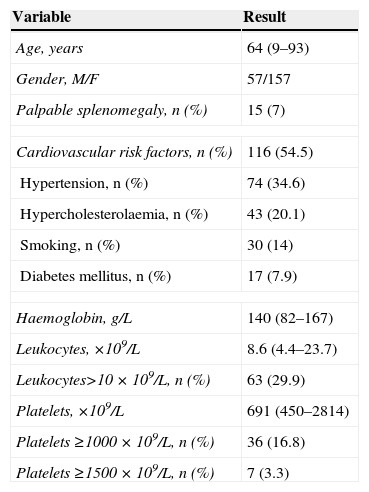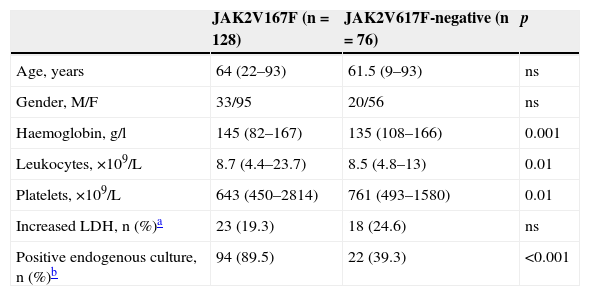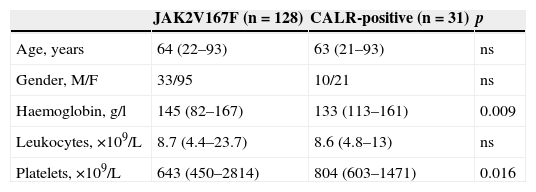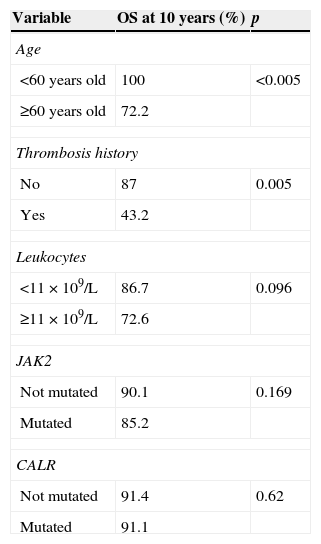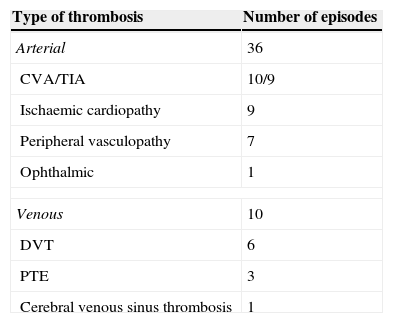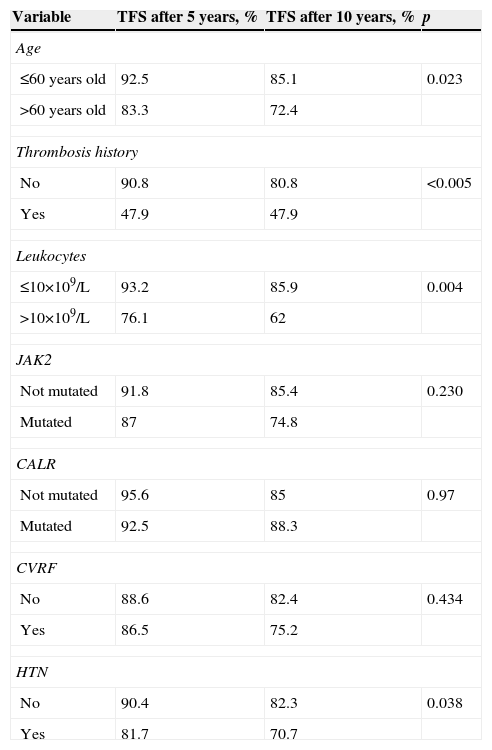Two prognostic models to predict overall survival and thrombosis-free survival have been proposed: International Prognostic Score for Essential Thrombocythemia (IPSET) and IPSET-Thrombosis, respectively, based on age, leukocytes count, history of previous thrombosis, the presence of cardiovascular risk factors and the JAK2 mutational status. The aim of the present study was to assess the clinical and biological characteristics at diagnosis and during evolution in essential thrombocythemia (ET) patients as well as the factors associated with survival and thrombosis and the usefulness of these new prognostic models.
Patients and methodsWe have evaluated the clinical data and the mutation status of JAK2, MPL and calreticulin of 214 ET patients diagnosed in a single centre between 1985 and 2012, classified according to classical risk stratification, IPSET and IPSET-Thrombosis.
ResultsWith a median follow-up of 6.9 years, overall survival was not associated with any variable by multivariate analysis. Thrombotic history and leukocytes >10×109/L were associated with thrombosis-free survival (TFS). In our series, IPSET prognostic systems of survival and thrombosis did not provide more clinically relevant information regarding the classic risk of thrombosis stratification.
ConclusionThrombotic history and leukocytosis >10×109/L were significantly associated with lower TFS, while the prognostic IPSET-Thrombosis system did not provide more information than classical thrombotic risk assessment.
Recientemente se han publicado 2 nuevos índices pronósticos de supervivencia y de trombosis, el International Prognostic Score for Essential Thrombocythemia (IPSET) y el IPSET-Thrombosis, respectivamente, basados en la edad, la cifra de leucocitos, la historia de trombosis, la presencia de factores de riesgo cardiovascular y el estado mutacional de JAK2. El objetivo del presente estudio fue analizar las características clínico-biológicas en el momento del diagnóstico y durante la evolución en una serie homogénea de pacientes con trombocitemia esencial (TE), así como analizar los factores asociados a la supervivencia y a la trombosis y la utilidad de dichos índices pronósticos.
Pacientes y métodosSe revisaron los datos analíticos y clínicos y el estado mutacional de JAK2, MPL y calreticulina de 214 pacientes diagnosticados de TE consecutivamente en un único centro entre 1985 y 2012. Se clasificaron los pacientes de acuerdo con la estratificación de riesgo clásica, el IPSET y el IPSET-Thrombosis.
ResultadosCon una mediana de seguimiento de 6,9 años, el análisis multivariado no puso de manifiesto ningún factor asociado a la supervivencia global. Los antecedentes trombóticos y la leucocitosis >10×109/l se asociaron a la supervivencia libre de trombosis (SLT). En nuestra serie, los sistemas pronósticos IPSET de supervivencia y de trombosis no aportan información de mayor relevancia clínica respecto al pronóstico asociado con los factores de riesgo trombótico clásico.
ConclusiónLos antecedentes de trombosis y la leucocitosis >10×109/l fueron las variables asociadas a una SLT inferior, mientras que el sistema pronóstico IPSET-Thrombosis no aportó mayor información que la estratificación clásica de riesgo trombótico.







